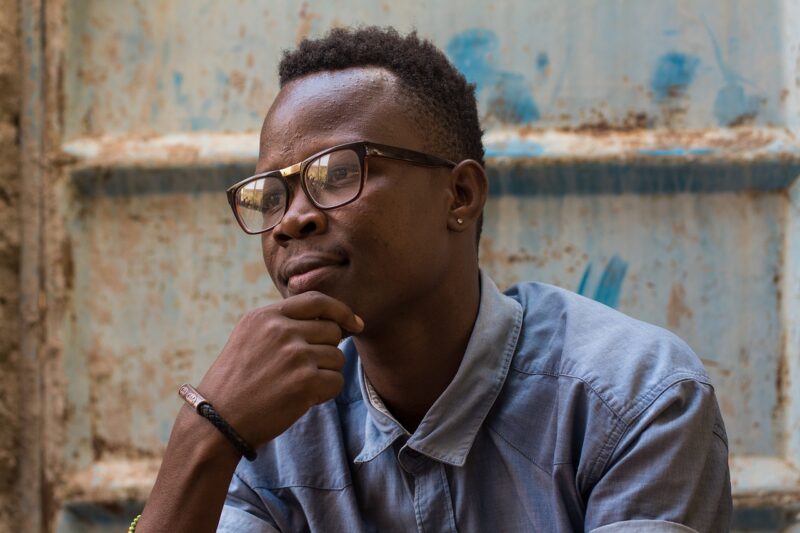The Power of Body Language: How to Appear More Confident and Engaging
November 10, 2024

Body language is an essential aspect of communication that includes gestures, postures, facial expressions, and eye movements. It often speaks volumes about your confidence and engagement levels, even when you are silent. In particular, mastering body language can significantly improve your personal and professional relationships, making you appear more confident and genuinely engaged in conversations.
1. Understanding Body Language
Body language is often considered a ‘silent language’ because it communicates feelings and intentions without the use of words. According to studies, up to 93% of communication effectiveness is determined by non-verbal cues. This means that how we say things – through body language – can express sincerity, comfort, confidence, or the opposite: discomfort, nervousness, and disengagement.
Body language encompasses various elements, including:
- Facial Expressions: Facial cues can express a wide range of emotions including happiness, sadness, surprise, and anger, which can influence how others perceive you.
- Posture: Your stance conveys how open or closed you are to communication, while an upright posture signifies confidence and authority.
- Gestures: Hand movements can either enhance or distract from your message; open gestures usually signal openness, while closed gestures may suggest defensiveness.
- Eye Contact: Making appropriate eye contact shows engagement and can help forge a connection with others. Too little can indicate disinterest, while too much can feel aggressive.
Learning to leverage these cues can enhance your communication skills and manifest an image of confidence and engagement.
2. The Importance of Confidence in Body Language
Confidence in body language is crucial because it impacts how others perceive you. When you embody confidence, it influences your interactions with colleagues, clients, and friends. Here are some ways to project confidence through body language:
- Stand Tall: Maintain an upright posture with your shoulders back to convey authority and self-assurance. Avoid slouching, as it can express doubt or insecurity.
- Use Open Gestures: Keep your arms uncrossed and use gestures to engage your audience. Open gestures promote a sense of trust and approachability.
- Maintain Eye Contact: Aim to maintain eye contact with the person you are speaking to. This builds rapport and shows that you are fully present in the conversation.
- Control Your Space: Be aware of your personal space and confidently navigate the environment. Standing or sitting confidently allows you to own the space you are in.
By adopting these habits, you can enhance a confident persona that draws others to you and boosts your self-assurance.
3. Engaging through Body Language
Engagement in conversation can often be measured by your body language. By consciously working to improve how you present yourself, you can create engaging interactions that resonate with others. Here are ways to engage effectively through body language:
- Nod and Smile: These simple gestures signal to others that you are listening and that you appreciate their contributions, fostering a positive atmosphere during discussions.
- Lean Slightly Forward: This non-verbal cue demonstrates interest and attentiveness. Leaning in transforms a passive presence into an active one, encouraging dialogue.
- Mirror Their Body Language: Subtly mirroring the body language of the person you’re speaking with builds rapport and creates a sense of connection.
- Use Visual Cues: Pointing to relevant objects, showing visuals, or expressing enthusiasm through gestures can keep your audience engaged and focused on your message.
Focusing on these techniques can significantly elevate your conversational skills, making discussions more memorable and enjoyable.
4. Recognizing Common Mistakes in Body Language
While body language can effectively enhance your confidence and engagement, it may also misfire if you’re not mindful. Here are common mistakes to avoid:
- Crossed Arms: This can signal defensiveness or indifference. Instead, maintain an open posture to show receptiveness to conversation.
- Fidgeting: Playing with your hair, tapping feet, or other nervous habits can detract attention from your words and project anxiety. Keep your movements calm and deliberate.
- Inconsistent Cues: If your verbal and non-verbal messages conflict, this may confuse your audience and weaken your credibility. Strive for alignment between what you say and how you say it.
- Lack of Eye Contact: Avoiding eye contact can indicate disinterest or dishonesty. Practice maintaining appropriate eye contact to enhance connection with your audience.
Being aware of these pitfalls can help refine your body language, increasing your effectiveness in communication.
5. Practicing Body Language Awareness
To enhance your body language skills, practice and self-awareness are key. Here are a few strategies for developing these skills:
- Record Yourself: Film yourself during a practice speech or casual conversation. Analyze your body language and note areas for improvement.
- Observe Others: Watch speakers and assess their non-verbal communication styles. Take note of techniques you can adopt into your own body language repertoire.
- Practice in Front of a Mirror: Practicing in front of a mirror allows you to see how your body language comes across to others, giving you a clearer understanding of your presence.
- Seek Feedback: Ask trusted friends or colleagues to observe your body language during conversations and provide constructive feedback on how you can improve.
Regular practice can cultivate greater self-awareness and ultimately make you a more engaging communicator.
Conclusion
The power of body language should not be underestimated. By understanding and mastering your non-verbal communication, you can project confidence and serve as an engaging conversational partner. Remember that effective communication relies not only on words but also on how you present yourself through body language.
Whether it’s subtly mirroring another person’s behavior or maintaining an open posture, every cue contributes to the overall message you convey. In a world that often prioritizes verbal communication, becoming adept in body language can set you apart, enhancing your relationships and personal effectiveness. Enhance your awareness, practice regularly, and embrace the powerful transformative potential of your body language today.







